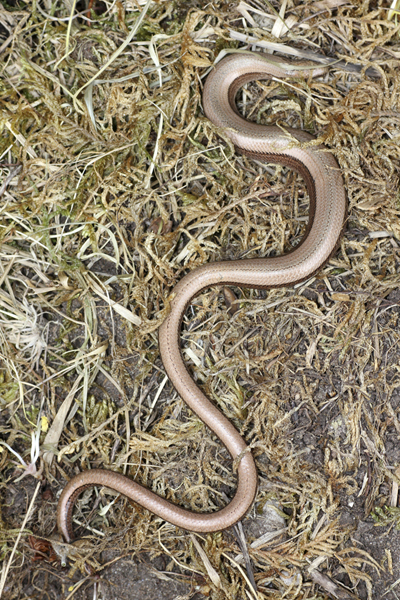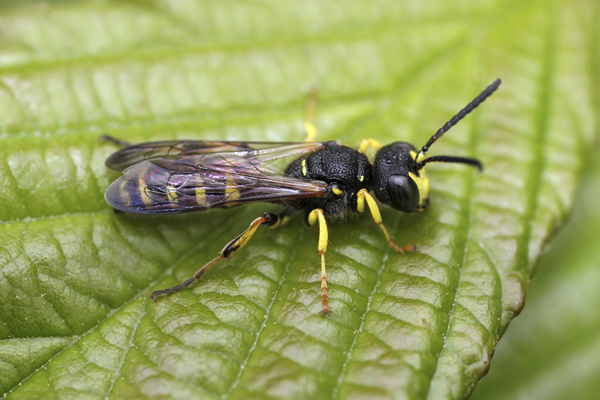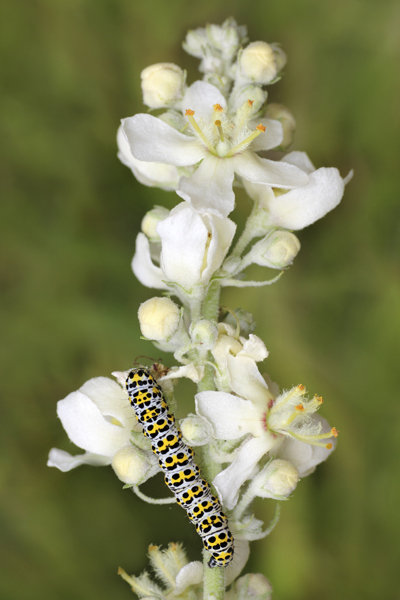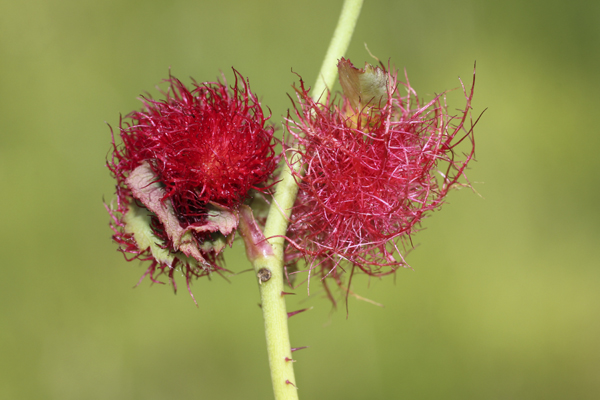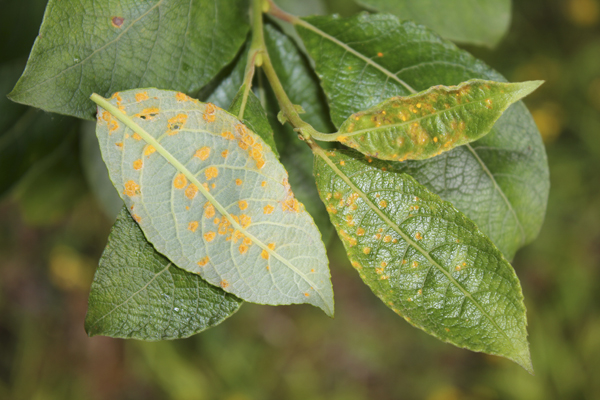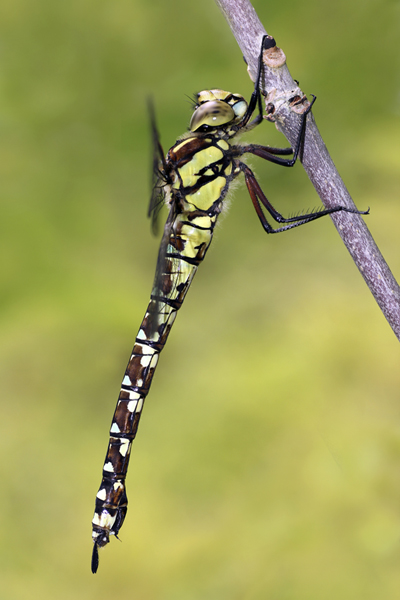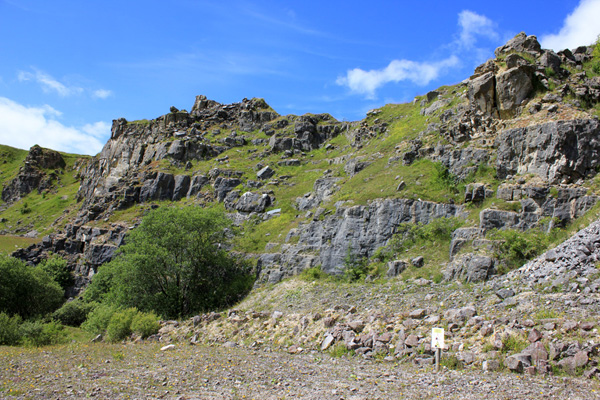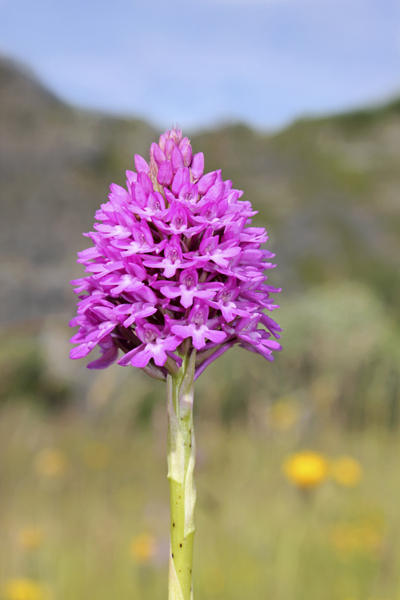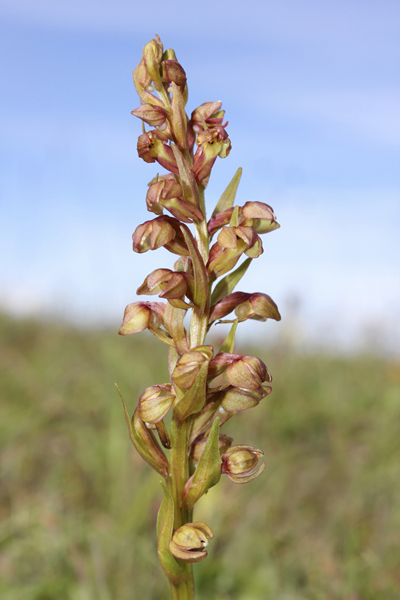A natural history packed day as DaveB and I visited a couple of sites in the Wrexham area using public transport. We initially took the train to Chester then boarded Arriva’s 1 bus alighting at the village of Marford famous for its quaint Gothic revival cottages, built as part of the former Trevalyn Hall estates. Crosses also feature in the cottage designs to protect the inhabitants from the ghost of Marford “Lady Blackbird”, who is said to tap at the windows.
The land around Marford and nearby Gresford was formed at the end of the last Ice Age when two ice sheets joined. When the ice melted, about 14,000 years ago, it left behind huge areas of sand and gravel and Marford Quarry was opened in 1972 providing the source of the aggregate for the Mersey Tunnel. The site was designated a SSSI in 1989 primarily because of its rare Invertebrate species including solitary and spider hunting Wasp species and Plants including Wild Liquorice Astragalus glycyphyllos, Green-flowered Helleborine Epipactis phyllanthes. North Wales Wildlife Trust bought the site the following year.
A range of notable Plants included Greater Spearwort Ranunculus lingua growing in the small pond, Stinking Hellebore Helleborus foetidus, Thyme-leaved Sandwort Arenaria serpyllifolia, Perforate St John’s-wort Hypericum perforatum, Weld Reseda luteola, Scarlet Pimpernel Anagallis arvensis, Creeping Cinquefoil Potentilla reptans, Wild Strawberry Fragaria vesca, Hogweed Heracleum sphondylium, Common Centaury Centaurium erythraea, Yellow-wort Blackstonia perfoliata, Wood Sage Teucrium scorodonia, Carline Thistle Carlina vulgaris, Musk Thistle Carduus nutans, Pyramidal Orchid Anacamptis pyramidalis and Common Spotted-orchid Dactylorhiza fuchsia. Dave identified a speciality favouring lime soils in quarries and the edges of woodland as Common Gromwell Lithospermum officinale.
Woodlice
We turned over a few logs and disturbed groups of Common Striped Woodlouse Philoscia muscorum, Common Shiny Woodlouse Oniscus asellus and a couple of Pill Millipedes Glomeris marginata. Another log had a few Ground Beetles including one of the two species of Violet Ground Beetle called Carabus problematicus which has ridges and dimples on its elytra. A small felt mat that is designed to absorb heat and attract Reptiles to hide underneath had done its job well with a female Slow Worm Anguis fragilis adopting a sinusoidal pose.
Slow Worm
A Sand-tailed Digger Wasp Cerceris arenaria sat on a leaf for a photo and later we saw a number of others entering the nest holes in a sandy bank, from which side-tunnels radiate leading to cells. An egg is laid in each cell and the growing larvae are provisioned with paralysed prey, mostly Weevils Curculionidae sp.
Sand-tailed Digger Wasp
The leaves of the tall flowering Great Mulleins Verbascum thapsus around the site had been almost completely decimated by the caterpillars of the Mullein Moth Cucullia verbasci leaving noticeable frass (pelleted excreta). However there were no caterpillars now visible – we searched on and under those remaining leaves, amongst the flowers and in nearby vegetation. We then found a few flowering spikes of White Mullein Verbascum lychnitis which had half a dozen caterpillars of varying sizes.
Mullein Caterpillar
There were a few small but bright red Robin’s Pincushion Galls a.k.a. ‘Bedeguar Gall on Dog Rose Rosa canina caused by the Gall Wasp Dipoloepis rosae, Willow Rust Melampsora spp. on the leaves of Salix sp. and a Yellow Waxcap Hygrocybe flavescens.
Robin’s Pincushion Gall
Willow Rust
Butterflies included a Meadow Brown Maniola jurtina and plenty of Ringlets Aphantopus hyperantus with Odonata including a patrolling male Broad-bodied Chaser Libellula depressa and a very obliging Migrant Hawker Aeshna mixta.
Migrant Hawker
We returned to Marford Village along Springfield Lane noting Green Alkanet Pentaglottis sempervirens, Ivy-leaved Toadflax Cymbalaria muralis, Red Valerian Centranthus ruber and Feverfew Tanacetum parthenium before boarding an Arriva 1 bus again to Wrexham.
After quickly eating our lunch we boarded the Arriva 10 bus to Minera whose name derives from the Latin for “mine” or “ore” (the Welsh name Mwynglawdd translates roughly as “ore mine”). We disembarked at the village triangle walked down the road and crossed the newly re-pointed stone bridge over the River Clywedog where Dave spotted a Dipper flying upstream before turning onto Ty Brith Ln and onto the track leading up to the Quarry. Plants included Greater Celandine Chelidonium majus, Hedge Woundwort Stachys sylvatica and the feathery-looking leaves of Brittle Bladder-fern Cystopteris fragilis growing amongst the Polypody Polypodium vulgare.
A scrubby area with flowering Blackberry Rubus fruticosus and Field-rose Rosa arvensis attracted Mountain Bumblebees Bombus monticola and the Hoverfly Volucella pellucens with the umbellifer heads of Ground-elder Aegopodium podagraria holding a scattering of other Insects.
Next the wooded area growing on the old lime slag heaps had Common Spotted Orchids Dactylorhiza fuchsii in a variety of colours, Common Twayblade Neottia ovata along with Broad-leaved Helleborines Epipactis helleborine that were just in bud and a few spikes of the green fruits of Lords-and-Ladies Arum maculatum.
Minera Quarry
We arrived in the main quarry the sun putting in an appearance which brought out a selection of Butterflies including Large Skipper Ochlodes venata, Common Blue Polyommatus icarus, Grayling Hipparchia semele, Meadow Brown Maniola jurtina, Ringlet Aphantopus hyperantus and Small Heath Coenonympha pamphilus.
A feast of Wildflowers with Lady’s-mantle Alchemilla sp. Common Bird’s-foot-trefoil Lotus corniculatus, Tufted Vetch Vicia cracca, Meadow Vetchling Lathyrus pratensis, Wood Sage Teucrium scorodonia, Selfheal Prunella vulgaris, Wild Thyme Thymus polytrichus, Eyebright Euphrasia officinalis, Yellow-rattle Rhinanthus minor, Lady’s Bedstraw Galium verum, Small Scabious Scabiosa columbaria, Carline Thistle Carlina vulgaris, Welted Thistle Carduus crispus, Marsh Thistle Cirsium palustre, Common Knapweed Centaurea nigra, Oxeye Daisy Leucanthemum vulgare and the leaves of Colt’s-foot Tussilago farfara. Pyramidal Orchids Anacamptis pyramidalis joined masses of Common Spotted Orchids Dactylorhiza fuchsia, a handful of Heath Spotted-orchids Dactylorhiza maculata and Fragrant Orchids Gymnadenia conopsea that were just beginning to bloom.
Pyramidal Orchid
The small pond fringed with Marsh Horsetail Equisetum palustre held a Great Diving Beetle Dytiscus marginalis, a couple of Pond Skaters Gerris lacustris along with a Large Red Damselfly Pyrrhosoma nymphula and a few Common Blue Damselflies Enallagma cyathigerum.
Frog Orchid
We climbed up a path through woodland along the bottom edge of the quarry before emerging at a ridge giving great views over the whole quarry complex. A few more Wildflowers with Salad Burnet Sanguisorba minor and Kidney Vetch Anthyllis vulneraria but the best was kept until last. I’d only read a few days before our visit that Frog Orchids Coeloglossum viride had been re-discovered at the quarry in 2014 and lo and behold there was a small flowering spike. The compact cowl of three sepals forms a globular shape with the tongue only just protruding from beneath the cowl. Once we had our eye in, we counted forty small spikes!
If you are interested in the wildlife of the north-west of England and would like to join the walks and coach trips run by the Merseyside Naturalists’ Association, see the main MNA website for details of our programme and how to join us.


